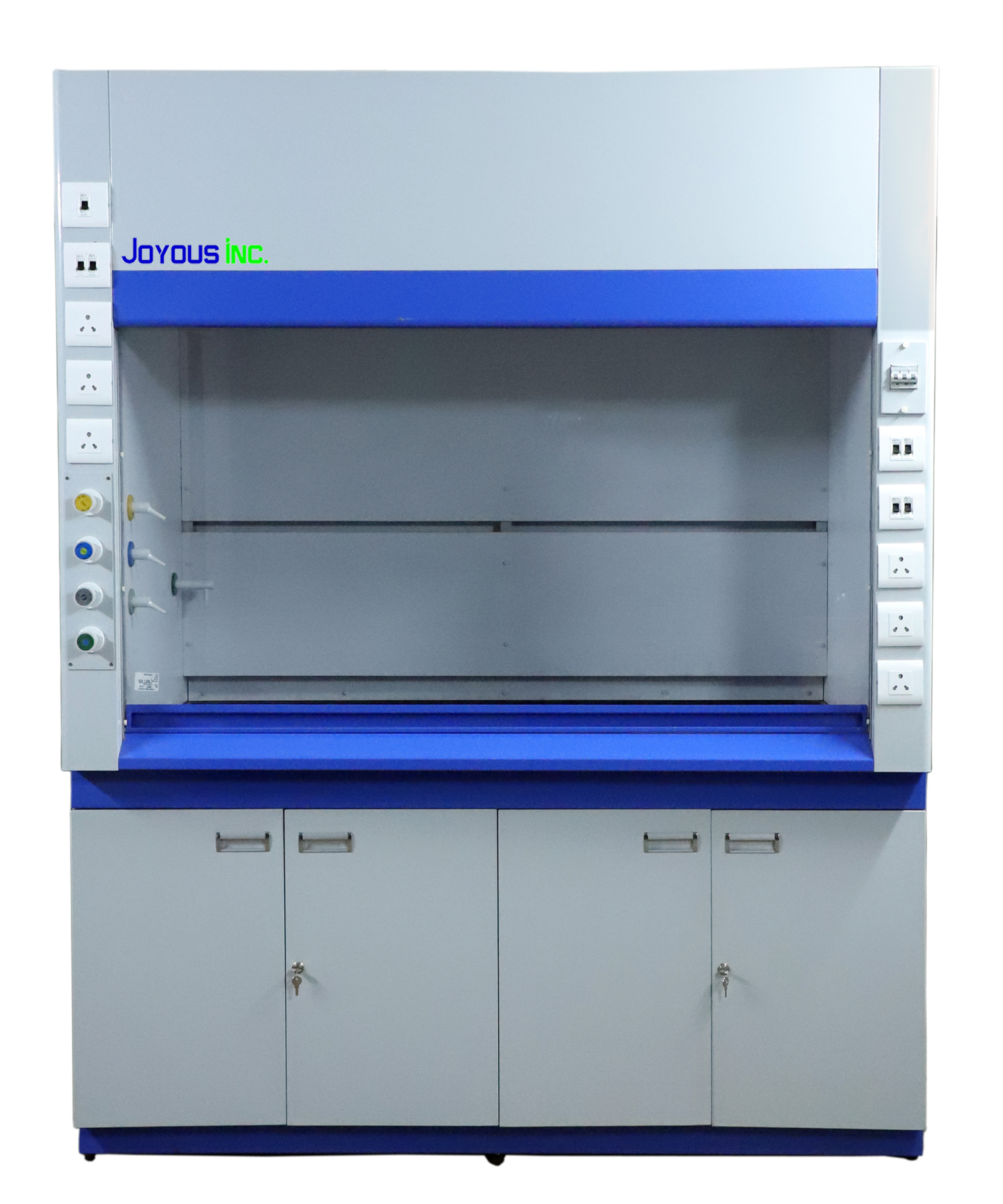12 Apr Fume Hood and its Uses in Chemical Lab
A fume hood is a type of ventilation system that is used in laboratories to control and reduce exposure to hazardous gases, vapours, and substances. These hoods are designed to capture harmful fumes and exhaust them safely out of the lab environment. Fume hoods use negative pressure technology which means that the air inside the hood is constantly being drawn towards the back of the unit, preventing any toxic substances from escaping into the laboratory.
 Fume hoods are commonly found in chemical labs where experiments involving dangerous chemicals take place. The hood provides a safe space for scientists to carry out their work without risking their health or safety. Fume hoods come in various designs such as ducted or recirculating systems, and they can be made from different materials depending on the lab’s requirements. Some fume hoods have built-in features like alarms that go off if airflow levels fall below safe limits.
Fume hoods are commonly found in chemical labs where experiments involving dangerous chemicals take place. The hood provides a safe space for scientists to carry out their work without risking their health or safety. Fume hoods come in various designs such as ducted or recirculating systems, and they can be made from different materials depending on the lab’s requirements. Some fume hoods have built-in features like alarms that go off if airflow levels fall below safe limits.
A fume hood is an essential piece of equipment that plays a critical role in ensuring safety within laboratory environments. It helps protect workers by containing toxins and harmful chemicals within its enclosed space while exhausting them safely outside. With proper maintenance, regular inspection, and adherence to safety protocols when using it, this device ensures optimal functionality while providing maximum protection for lab personnel involved in hazardous activities.
Types of Fume Hoods
There are several types of fume hoods that are commonly used in chemical labs.
Ducted Fume Hood
ducted fume hood is connected to an exhaust system and releases air outside the building. This type of fume hood is often used for general chemistry experiments where harmful chemicals are being handled.
Recirculating Hood
Another type of fume hood is the recirculating hood, which filters air through a series of filters before releasing it back into the room. These hoods are ideal for labs that have limited access to ventilation systems.
Perchloric Acid Hood
A perchloric acid hood is specifically designed to handle dangerous perchloric acid vapours. These hoods feature special materials and coatings that prevent acid build-up and corrosion over time. Additionally, there are biosafety cabinets that offer protection against biological hazards such as bacteria and viruses. These cabinets use HEPA filters to trap airborne particles and prevent them from contaminating surrounding areas.
Each type offers unique features tailored towards specific applications like airflow control, filtration efficiency, and specialized material construction to accommodate handling hazardous chemicals safely with minimal risks of exposure or contamination during experiments.
Uses in Chemical Lab
A fume hood is an essential equipment in a chemical lab as it helps to protect the laboratory personnel from inhaling hazardous gases and vapours. The primary function of a fume hood is to contain these harmful substances within an enclosed area, vent them outside, and provide a safe working environment for the lab personnel.
The use of fume hoods in chemical labs is not limited to protecting the workers but also ensures that experiments are conducted efficiently without cross-contamination or interference from other chemicals. Fume hoods help maintain a stable environment by regulating temperature, humidity, and airflow inside the hood that affects experimental results.
Moreover, fume hoods come in different sizes and styles depending on their intended use in the laboratory. For example, large-scale experiments may require walk-in fume hoods while smaller ones can be performed using benchtop fume hoods. Overall, the use of a fume hood ensures safety and efficiency when conducting chemical experiments.
Conclusion
In conclusion, Lab fume hoods play a crucial role in ensuring the safety of laboratory workers when dealing with chemicals. They provide a controlled environment that limits exposure to hazardous chemicals by directing airflow away from the worker’s breathing zone. Fume hoods also help to prevent contamination of experimental samples and equipment by containing any harmful vapors or gases.
It is important to note that fume hoods require regular maintenance and monitoring to ensure they are functioning optimally. This includes regular testing of airflow velocity, inspection of ductwork and filters, and proper use by lab personnel. Failure to maintain and use fume hoods correctly can result in exposure to dangerous levels of chemical contaminants.
In summary, understanding the importance of fume hood usage is critical for maintaining a safe work environment in chemical laboratories. Properly functioning fume hoods protect both workers and experiments from harm, while routine maintenance ensures they continue to perform as intended.

